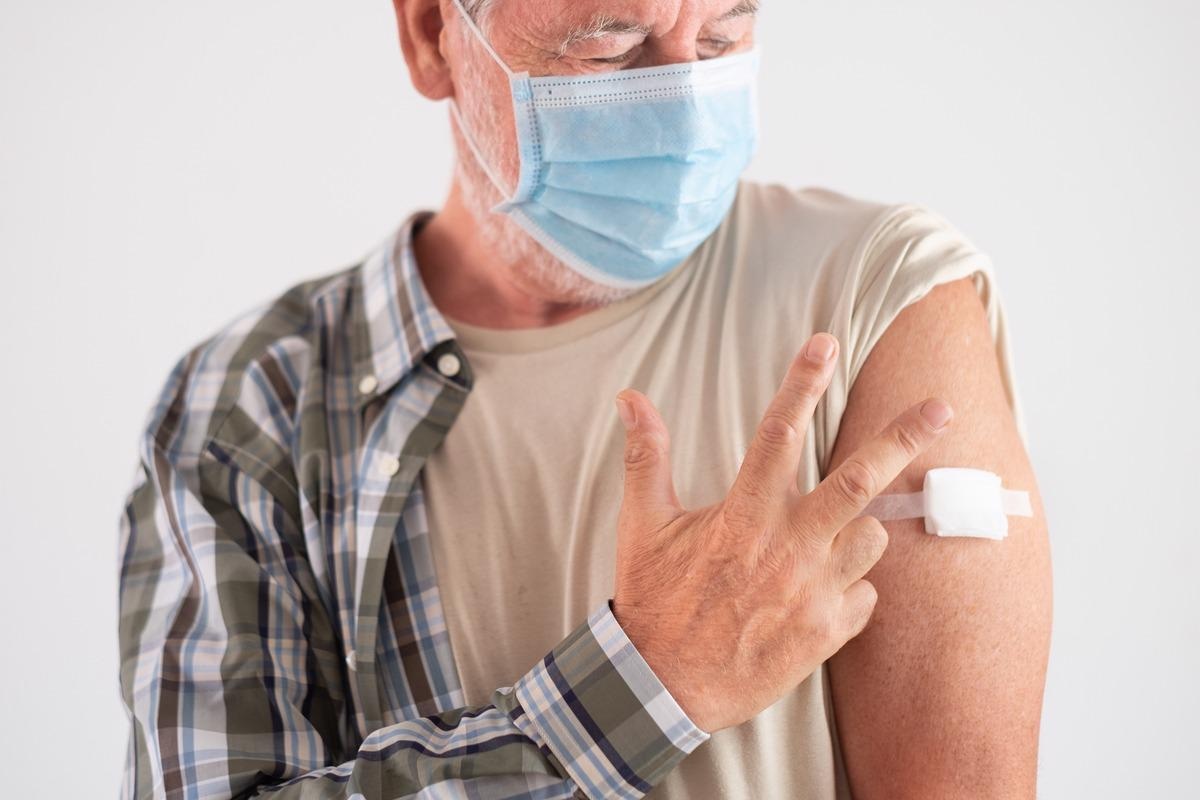hgh benefits for athletes

In a recent study posted to the medRxiv* preprint server, researchers assessed the safety and immunogenicity of severe acute respiratory syndrome coronavirus 2 (SARS-CoV-2) booster vaccines.

Coronavirus disease 2019 (COVID-19) vaccines have shown lowered efficiency against emerging SARS-CoV-2 variants. This has necessitated the production of adjuvanted recombinant protein COVID-19 vaccines to improve antiviral response.
About the study
In the present study, researchers estimated the safety and immunogenicity of a heterologous booster dose of Sanofi/GSK-D614 or -B.1.351 adjuvanted recombinant protein vaccine compared to that of a homologous booster dose of BNT162b2 messenger ribonucleic acid (mRNA) vaccine.
The team conducted a single-blinded, randomized, multicenter study across France, comprising participants recruited between 8 December 2021 and 14 January 2022. The study involved individuals 18 years and above who were in either good or stable health. Participants reporting any pre-existing comorbidities were included in the study if they had received two BNT162b2 doses. The second dose was received three to seven months before the study booster dose was administered.
The participants were divided randomly into three groups, each receiving either the BNT162b2, monovalent (MV) (D614), or the MV(Beta) vaccine as the booster dose. The Sanofi/GSK protein vaccines used in the study were based on pre-fusion SARS-CoV-2 spike (S) antigens, fioricet drug interactions in which the transmembrane domain was replaced with a trimerization domain. Additionally, the randomization of the study cohort was classified based on the age group and the center.
The vaccines were injected into the deltoid muscle by trained professionals on day 0 (D0) of the study. Blood samples were subsequently obtained at D0, D3, D15, D28, D90, and D365. The team assessed the presence of neutralizing antibodies detected against the SARS-CoV-2 wild-type (D614) strain and the SARS-CoV-2 Beta (B.1.351), Delta (B.1.617.2), and Omicron (BA.1) variants using a microneutralization test. This test used the clinical strains of SARS-CoV-2 and Vero E6 cells expressing transmembrane serine protease 2 (TMPRSS2) and relied on the detection of a cytopathic effect (CPE) five days after viral infection.
Moreover, an enzyme-linked immunosorbent assay (ELISA) was also performed to evaluate the anti-SARS-CoV-2 immunoglobulin (IgG) antibody titer induced against the SARS-CoV-2 S1 protein and the nucleocapsid protein. The team also measured the level of S-specific interferon (IFN)-ɣ and interleukin (IL)-2 producing CD4+ T-cells.
The primary outcome of the study included the number of subjects that showed a minimum of a 10-fold increase in neutralizing antibody titers against the wild-type strain or the Beta variant between day 0 and day 15 after vaccination. The secondary outcomes included the rate of increase in neutralizing antibody titers against the wild-type strain and the Beta, Delta, and Omicron variants between day 0 and day 15, the average anti-S IgG levels, and the number of IL-2 and IFNɣ-secreting CD4+ T-cells.
Results
The study included 247 participants who were vaccinated with two doses of the BNT162b2 vaccine. Among these, Sanofi/GSK MV(D614) booster was administered to 85 participants, Sanofi/GSK MV(Beta) booster to 80, and BNT162b2 booster to 82 individuals. The average age of the study population was 40.6 years, with 40.4% women.
The study results showed that SARS-CoV-2 infection or positive SARS-CoV-2 IgG at either day 0 or day 15 was found in 9.4% of D614-vaccinated, 10% of the Beta-vaccinated, and 6.1% of the BNT162b2-vaccinated participants. The proportion of individuals displaying a minimum of a 10-fold increase in the neutralizing antibody titers from day 0 to day 15 against the D614 strain and the Beta variant was 55.3% and 44.7% among the D614-vaccinated, 76.1%, and 84.5% among the Beta-vaccinated, and 63.2% and 51.3% among the BNT162b2-vaccinated persons.
The team also noted that the level of CD4+ T-cells that produced IL-2 and IFNɣ improved after vaccination when the T cells were stimulated with SARS-CoV-2 wild-type-derived S peptides. The rate of increase in the number of CD4+ T-cells showed a positive vaccine-elicited response for IL-2 and/or IFNɣ at day 15 remarkably improved in participants boosted with MV Beta compared to those boosted with BNT162b2.
Between day 0 and day 7, solicited injection-site adverse events were reported by approximately 83.5% of the D614-vaccinated, 80.0% of the Beta-vaccinated, and 82.9% of the BNT162b2-vaccinated participants. Moreover, from day 0 to day 7, solicited systemic adverse events were observed in 48.2% of the D614-vaccinated, 62.5% of the Beta-vaccinated, and 62.2% of the BNT162b2-vaccinated participants. Malaise and headaches were experienced by 31.8% and 27.1% of the D614 group, 40% and 33.7% of the Beta group, and 35.4% and 42.7% of the BNT162b2 group.
Conclusion
Overall, the study findings showed that the three vaccines sufficiently increased the neutralizing antibody titers after the BNT162b2 primary vaccination regimen. Notably, the heterologous booster vaccination with the Sanofi/GSK Beta vaccine showed a high neutralizing antibody response against the SARS-CoV-2 variants.
*Important notice
medRxiv publishes preliminary scientific reports that are not peer-reviewed and, therefore, should not be regarded as conclusive, guide clinical practice/health-related behavior, or treated as established information.
- Launay, O. et al. (2022) "Immunogenicity and Safety of Beta Adjuvanted Recombinant Booster Vaccine". medRxiv. doi: 10.1101/2022.05.25.22274904. https://www.medrxiv.org/content/10.1101/2022.05.25.22274904v1
Posted in: Medical Science News | Medical Research News | Disease/Infection News
Tags: Antibodies, Antibody, Assay, Blood, CD4, Coronavirus, Coronavirus Disease COVID-19, covid-19, Enzyme, Homologous, Immunoglobulin, Interferon, Interleukin, Muscle, Omicron, Peptides, Protein, Respiratory, Ribonucleic Acid, SARS, SARS-CoV-2, Serine, Severe Acute Respiratory, Severe Acute Respiratory Syndrome, Syndrome, Vaccine
Source: Read Full Article